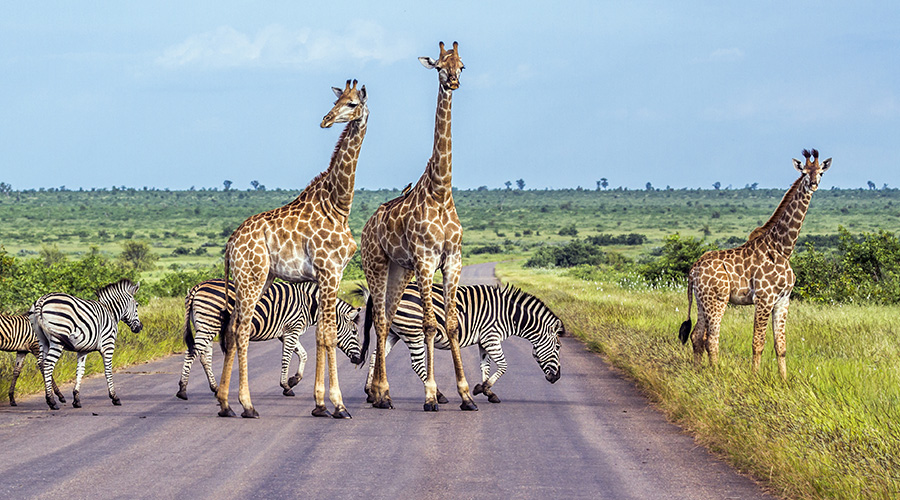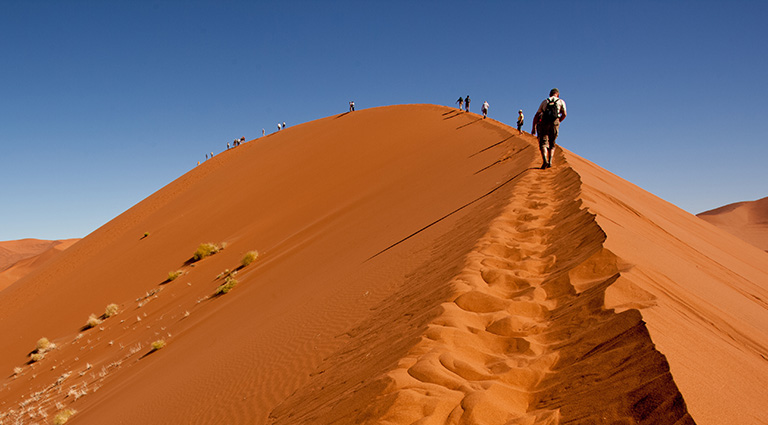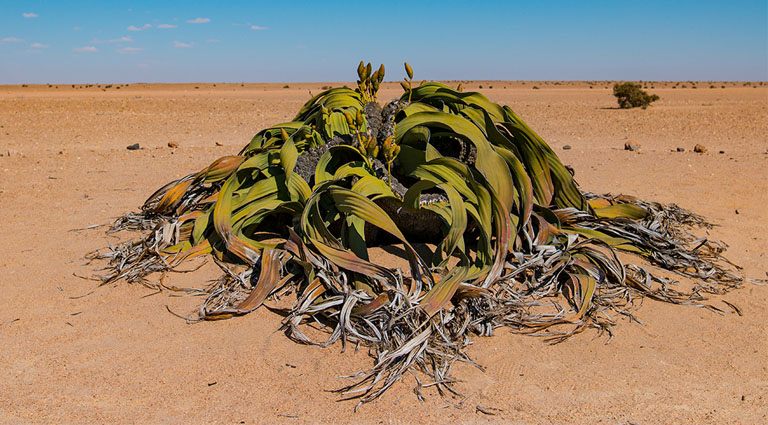
Nestled along the southwestern coast of Africa lies a landscape so surreal, it seems straight out of a dream. The Namib Desert, one of the oldest and driest on Earth, has long been luring adventurous travellers with its otherworldly beauty. If it’s on your travel wish list too, you’re in luck: Collette’s new Namibia & South Africa: Epic Landscapes & Wildlife tour is scheduled for departures beginning in May of 2025
This small group Explorations tour will take travellers to Etosha and Kruger National Parks, the coastal town of Swakopmund, the South African capital city of Cape Town, and yes, to the heart of the Namib desert. Read on for more about this fascinating place.
Geology:
Dating back at least 55 million years, the Namib Desert is believed to be the oldest desert in the world. Its name, "Namib," is derived from the Nama word for "vast place," a fitting description for this expansive landscape of towering dunes.
At the heart of the Namib lies Sossusvlei, a salt and clay pan surrounded by some of the highest sand dunes on the planet. These dunes, sculpted by the wind over millennia, create a mesmerizing landscape of shifting colours and shadows, particularly striking during sunrise and sunset.
One of the most iconic features of the Namib Desert is the sand dune known as "Big Daddy," which rises dramatically from the desert floor, offering climbers sweeping views of the surrounding landscape. Nearby, Deadvlei, a surreal white clay pan dotted with ancient, skeletal camel thorn trees, provides a hauntingly beautiful contrast against the backdrop of red dunes and deep blue skies.

Flora and Fauna:
Despite its inhospitable conditions, the Namib Desert is home to some plant and animal life, specially adapted to survive in this harsh environment. The Welwitschia mirabilis, often referred to as a "living fossil," is one of the most iconic plant species found in the Namib. With its two long, strap-like leaves and deep taproot system, this remarkable plant can live for over 1,000 years.

A variety of desert-adapted wildlife calls Namib home too, including gemsbok or oryx (a type of antelope), mountain zebras, and even wild ostriches that roam the plains in search of food and water. Along the coast, colonies of Cape fur seals bask in the sun on rocky outcrops, while rare desert-adapted elephants traverse the dry riverbeds in search of precious water sources.
Cultural Significance:
While the Namib is almost completely uninhabited by humans, there are several small settlements of indigenous groups here, including the Herero and Nama communities. For the indigenous peoples of Namibia, the desert holds deep cultural and spiritual significance, providing inspirations for myths, legends, and traditional rituals passed down through generations.
Want to learn more about Namibia & South Africa: Epic Landscapes & Wildlife? Click here and sign up to receive emails about tour details, departure dates, and more.
